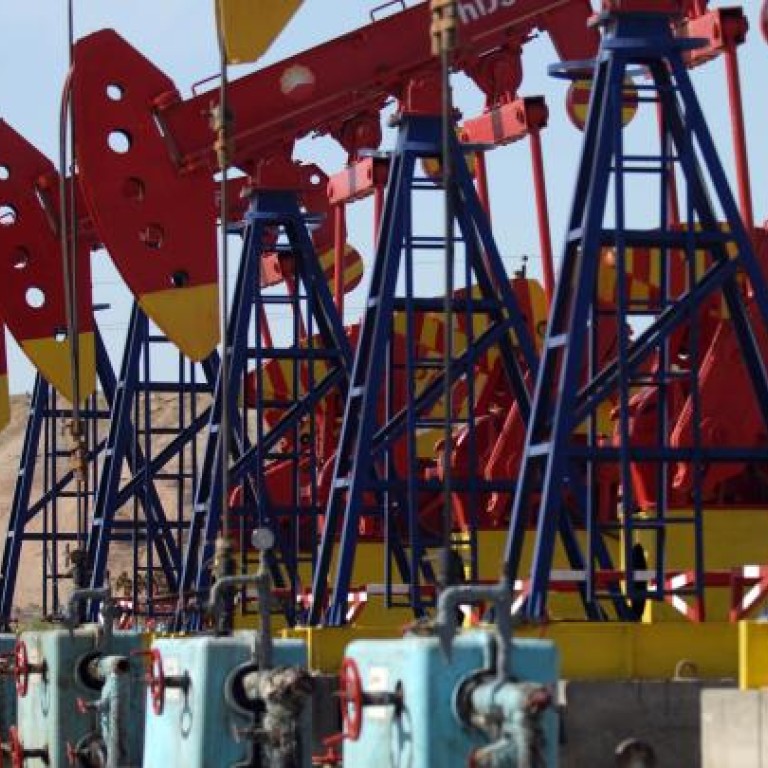
BHP to sell its interest in Browse to PetroChina for US$1.63b
PetroChina, Asia’s biggest oil producer, agreed to pay BHP Billiton US$1.63 billion for its holding in Woodside Petroleum’s proposed Browse liquefied natural gas project in Western Australia.
PetroChina will acquire an 8.33 per cent stake in the East Browse joint venture and a 20 per cent share of West Browse, BHP said on Wednesday in a statement.
The deal comes as Chinese oil and gas acquisitions reached a record this year, following Cnooc’s US$15.1 billion bid for Nexen. It gives PetroChina a share in natural gas resources off the Australian coast that may underpin an LNG venture estimated by Deutsche Bank to cost A$44 billion (US$46 billion). The Chinese state-owned company wants half its oil and gas output to come from overseas by the end of the decade.
The purchase confirms “China’s intensifying interest for natural gas imports,” Gordon Kwan, head of energy research at Mirae Asset Securities HK, said. “Expect more such deals, and they will gain speedy regulatory approvals as they are minority stakes.”
The appetite for oil and gas assets among Asia-Pacific companies is growing after energy demand in the region rose at more than double the world average of 2.5 per cent last year. Up until now, purchases this year by China Petroleum & Chemical Corp., Cnooc, Malaysia’s Petroliam Nasional and India’s Oil & Natural Gas Corp. took the region’s total to a record US$99 billion, tying with the US for the first time.
China will drive global demand for natural gas, with its consumption rising more than 11 per cent a year through 2020, according to a presentation this month by BG Group.
Excluding the latest deal with Browse, Chinese companies had announced US$25 billion of oil and gas acquisitions this year, the most since at least 2007, according to data compiled by Bloomberg.
PetroChina is planning to invest at least US$60 billion this decade in global oil and natural gas assets, Chairman Jiang Jiemin said in March.
The company said in August it’s looking at assets in Central Asia, east Africa, Australia and Canada, with President Zhou Jiping telling reporters at the time he’s “completely confident” of achieving that goal.
Woodside, Australia’s second-biggest oil and gas producer, plans to decide next year whether to go ahead with Browse at James Price Point in the Kimberley wilderness region. Royal Dutch Shell and BP are also partners in the venture, while Chevron earlier this year divested its Browse share in a transaction with Shell.
Perth-based Woodside in February boosted estimates for the natural gas resources in Australia’s Browse Basin by 17 per cent to 15.5 trillion cubic feet.
“BHP and Chevron were two of the most vocal potential dissenters about the James Price Point development, and they’ve voted with their feet,” said Benjamin Wilson, a Sydney-based analyst at JPMorgan Chase.
Sending the gas to the existing North West Shelf LNG development operated by Woodside or using a floating LNG vessel to process the gas offshore are alternatives to developing a new Browse plant, he said. PetroChina will probably seek to buy LNG from Browse as well, according to Wilson.
Woodside said in October 2010 that supply talks were continuing with PetroChina even after a preliminary 2007 agreement to sell as much as 3 million metric tons of Browse LNG a year to the Chinese company lapsed.
Laura Lunt, a Woodside spokeswoman in Perth, declined to comment on whether the company is talking with PetroChina.
Woodside rose 1.6 per cent to A$34.45 in Sydney trading, while BHP gained 1 per cent to A$35.76. Australia’s benchmark S&P/ASX 200 Index climbed 0.2 per cent.
PetroChina and Shell own Australia’s Arrow Energy, which plans an LNG development on the Queensland state coast.
Shell may delay until 2014 a decision on whether to build the project amid rising costs in the country, Chief executive Peter Voser said in Beijing last month.
For the Chinese company, the Browse deal appears to show a lack of confidence in the Arrow plan and U.S. exports of the fuel, Neil Beveridge, an analyst at Sanford C. Bernstein in Hong Kong, wrote in a report on Wednesday.
Chinese companies have invested in other Australian LNG projects as part of agreements to buy fuel. China Petrochemical Corp., or Sinopec Group, is a partner in a A$23 billion venture led by ConocoPhillips and Origin Energy, and China National Offshore Oil Corp. agreed last month to pay US$1.93 billion to increase its stake in BG’s project.
Mitsubishi Corp., Japan’s biggest trading company, and Mitsui & Co. agreed earlier this year to buy a 14.7 per cent stake in Browse for $2 billion.
The Mitsui and Mitsubishi venture, Japan Australia LNG Pty, also is buying about 1.5 million tons of LNG annually from Browse.
PetroChina is paying about $5.40 per barrel of oil equivalent, higher than the $4.40 per barrel paid by the Japanese companies, Bernstein estimated.
BHP’s minority interest in Browse fell outside its strategy of owning “large, long-life, low-cost, expandable, upstream assets diversified by commodity, geography and market,” the world’s largest mining company said.
“The sale of Browse realizes an opportunity to exit at an attractive valuation.”
The Browse partners have a right to match PetroChina’s offer, which is subject to regulatory approvals and expected to be completed in the first half of 2013, BHP said.

